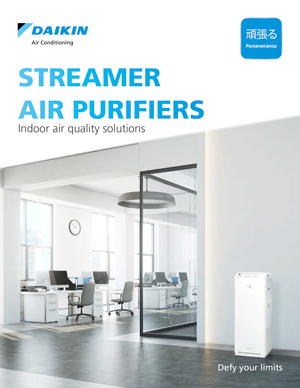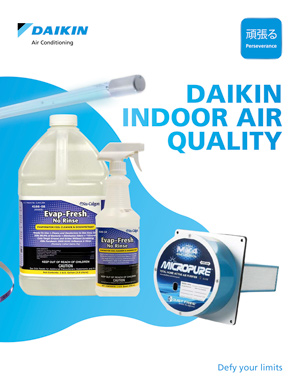
Every day we breathe around 8,000 liters of air in an average of 21,000 inhalations. Just as we worry about what we eat and drink, or even the quality of the air in our cities, are we aware of what we are breathing inside and outside the home?

Did you know that indoor air is more polluted than outdoor air?
Indoor air is between 2 and 5 times more polluted than outdoors, according to several studies, including that of the United States Environmental Protection Agency (EPA) 1. To this, in addition, is added the fact that we are part of the so-called ‘Indoor Generation’ or ‘Indoor Generation’, that is, we spend 90% of our time indoors, according to the World Health Organization (WHO)2.
Interior air quality
Indoor Air Quality (IAC) is the term that refers to the nature of the air inside buildings, which affects the health and well-being of its occupants. This quality is determined by the levels of pollutants present in the air. A representative indicator is particulate matter (PM), which is a mixture of solid and liquid particles of organic and inorganic substances suspended in the air.3
The particles are classified according to their aerodynamic diameter in PM10 (diameter less than 10 µm), called fine and coarse; PM2.5 (less than 2.5 µm), called fine particles; and PM0.1 (up to 0.1 µm), called ultrafine particles. These last two groups are the most dangerous for health, since they can enter the lungs more easily.4

Polluting agents
Inside the buildings that we often frequent (homes, offices, leisure places, and schools) we can find multiple sources of contamination, both from elements present inside, and other compounds that come from outside.
Indoor pollutants may include:
- Smoke of the tobacco.
- Allergens such as plant pollen, animal particles, or mites.
- Carbon monoxide, nitrogen oxide, particles or some volatile organic compounds that come from heating and hot water production appliances, or from the kitchen.
- Moisture leading to mold and mildew.
- Volatile organic compounds emitted by construction or cleaning products, furniture, decoration, DIY, etc.
Exterior pollutants that can enter building:
- Radon, a naturally occurring gas that is present in soils and rocks. When it enters the air, it emits radioactive particles that can enter the building through small cracks. It is dangerous for health when in high concentrations.5
- Air pollutants from motor vehicles, smokestacks or industrial processes.6
Harmful effects on health
Prolonged exposure to indoor pollution can cause problems in our health, especially in children – such as irritation of the eyes, nose or throat, headaches or respiratory problems. Therefore, it is essential to take care of the quality of the air we breathe. For this, the experts 7 recommend ventilating naturally, but also relying on technology.

Daikin, the air that you breathe
At Daikin, we have been concerned for years with offering equipment that not only provides air conditioning, but also provides higher quality air. Ventilation, air processing, humification or filtration are some of the essential components of Daikin equipment and systems that help to clean and purify it.
[1] https://www.epa.gov/report-environment/indoor-air-quality#importance
[3] https://www.who.int/es/news-room/fact-sheets/detail/ambient-(outdoor)-air-quality-and-health
[5] https://www.who.int/es/news-room/fact-sheets/detail/radon-and-health
[6] https://www.epa.gov/report-environment/indoor-air-quality#pollutants
[7] https://www.epa.gov/indoor-air-quality-iaq/improving-indoor-air-quality




